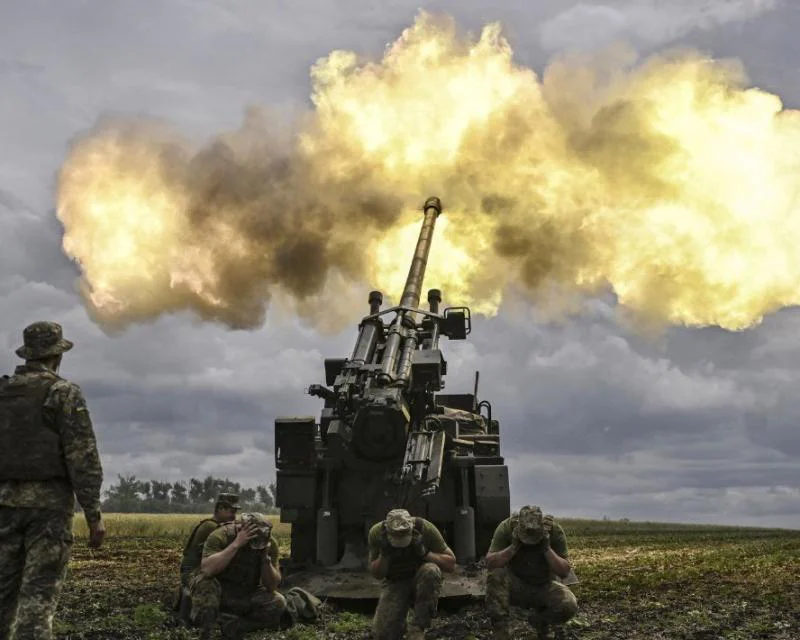The motivations, objectives, and participants of proxy war and defensive war are different. The main difference between a proxy war and a defensive war is the nature of the conflict and the participation of the primary actors. When two or more major powers support opposing factions or groups in a third country or region, they are engaging in a proxy war. These major powers provide financial, military, or logistical support to their respective proxies to acquire influence, accomplish strategic objectives, or advance their geopolitical interests. Proxy wars enable the involved powers to avoid direct confrontation, thereby minimising the risk of escalation and the possibility of a broader conflict. The Vietnam War and the current conflict in Syria are examples of proxy wars.
A defensive war, on the other hand, is a conflict in which a country or group engages in direct military action to defend itself from an attack or invasion by another country or group. In a defensive war, the primary objective is to defend one’s territory, sovereignty, or population from an external threat. Defensive wars are typically fought by the parties directly involved, without the indirect participation of major powers via proxies. World War II, in which various countries defended themselves against Axis aggression, and the Six-Day War of 1967, in which Israel launched a preemptive assault against its neighbours to defend its territory, are examples of defensive wars. The big difference between a proxy war and a defensive war rests in the nature of the conflict and the participation of the primary actors, with proxy wars involving indirect engagement through proxies and defensive wars involving direct military action to defend against external threats.
What is Proxy War?
A proxy war is a type of conflict in which two or more major powers fight without directly fighting each other. Instead, they support opposing groups or factions in a third country or region. Instead of fighting each other directly on the battlefield, these major powers give their proxies financial, military, or logistical support, often to reach strategic goals or advance their geopolitical interests. Proxy wars let the powers involved avoid going to war directly with each other. This reduces the risk of escalation and the chance of a bigger war. They often happen when the big powers have interests or want to show their power without the costs and risks of direct military action.
Proxy wars are often long and hard to understand because the groups that get help may have different and sometimes even opposing goals. Having outside powers involved can also worsen the conflict and last longer since these powers may provide weapons, training, or other resources that fuel the fighting. Some examples of proxy wars are the Vietnam War, in which the United States supported South Vietnam against the communist North Vietnam, which the Soviet Union and China backed; the ongoing conflict in Syria, in which different regional and global powers back different sides; and the conflicts in Africa and Latin America during the Cold War, in which the United States and the Soviet Union supported opposing groups to expand their spheres of influence. In short, a proxy war is an indirect conflict between major powers that back opposing groups or factions in a third country or region. This is done to further their strategic goals or geopolitical interests without directly fighting.
What is Defensive War?
A defensive war is a type of conflict in which a country or group takes direct military action to protect itself from an attack, invasion, or aggression from another country or group. In a defensive war, the main goal is to protect one’s territory, sovereignty, or population from an outside threat. This makes sure that the nation or group being attacked is safe and will survive. Most of the time, major powers don’t get involved in defensive wars through proxies. Instead, the parties directly involved fight the war. Alliances or coalitions of countries may sometimes fight defensive wars together to protect their shared interests or stop a threat they both face. Defensive wars can happen for many reasons, such as disagreements over territory claims, old grudges, or threats to national security. They can be small, like skirmishes or border disputes, or big, full-scale wars involving many countries.
Some examples of defensive wars are World War II, when the United States, the Soviet Union, and the United Kingdom fought back against Axis aggression; the 1967 Six-Day War, when Israel attacked its neighbours to protect its territory and stop an imminent attack; and the Korean War, when South Korea fought back against a North Korean invasion with the help of the United Nations and the United States. In short, a defensive war is a conflict in which a country or group uses direct military action to protect its territory, sovereignty, or population from outside threats. This is often done by bringing together many resources and alliances to ensure that everyone stays safe and lives.
Difference Between Proxy War and Defensive War
The nature of the battle and the participation of the key parties distinguish a proxy war from a defensive war. Big nations often engage in a proxy war by supporting opposing factions in a third country to avoid direct confrontation and pursue strategic aims or geopolitical interests. A defensive war is when a country or group takes offensive military action to defend its territory, sovereignty, or population from an outside attack. Direct military action to fight external threats is called a defensive war, whereas indirect engagement through proxies is known as a proxy war. In short, defensive wars and proxy wars are distinct in many respects, including but not limited to their nature of conflict, primary actors, objectives, direct confrontation, alliances and coalitions, length of combat, the complexity of conflict, and illustrative historical examples. The key differences between offensive and defensive wars are highlighted below.
Nature of Conflict
Proxy wars are fought when two or more great countries indirectly engage in conflict with one another by backing rival factions in a third country. In contrast, defensive wars are fought when one country directly defends itself from an attack or invasion by another.
Primary Actors
Defensive wars are fought by the directly involved parties, frequently without the assistance of proxies, while proxy wars involve major countries supporting proxy factions without actively participating in the conflict.
Objective
The fundamental goal of defensive wars is to preserve a country’s territory, sovereignty, or population from external threats. The primary goal of proxy wars is to achieve strategic objectives or enhance the geopolitical interests of the involved nations.
Direct Confrontation
Although defensive wars necessitate direct military combat between the relevant parties, proxy wars allow great countries to avoid confrontation and reduce the risk of escalation and broader warfare.
Coalitions and Alliances
Countries may form coalitions or alliances to fight a defensive war, but major powers typically back separate factions or organisations in proxy wars.
Duration and Complexity
Defensive wars can last anywhere from a few months to several years, depending on the extent and intensity of the attack or invasion. In contrast, proxy wars are typically drawn out and complicated due to the involvement of external forces and multiple factions with differing agendas.
Examples
The Vietnam War and the current conflict in Syria are examples of proxy wars, while World War Two and the Six-Day War in 1967 are examples of defensive wars.







